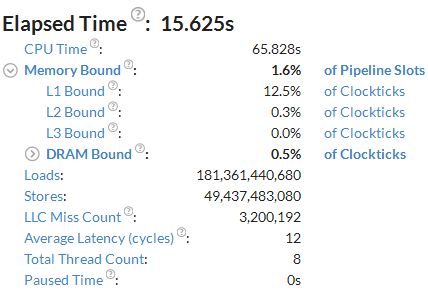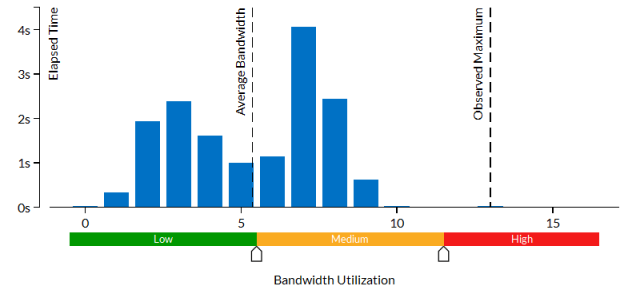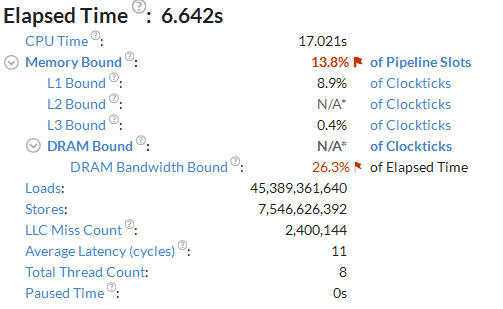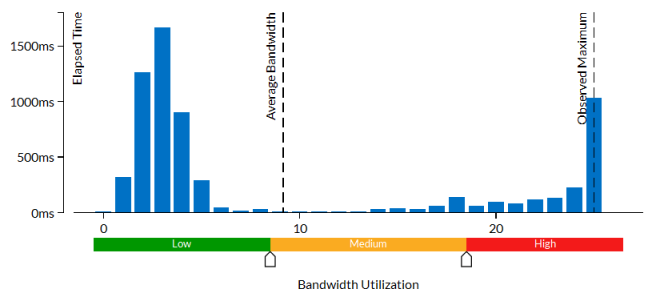PMDK Application Overhead
Find and fix an overhead on memory accesses for a PMDK-based application.
Content Expert: Eugeny Parshutin, Alexander Antonov
Persistent Memory Development Kit (PMDK) provides support for transactional and atomic operations to keep the data consistent and durable. This kit is a collection of open source libraries and utilities that are available for 64-bit Linux* OS. You can learn more about PMDK from the Persistent Memory Programming web site (pmem.io).
In addition to memory and storage tiers, persistent memory from Intel contains an additional persistent memory tier. This third tier offers greater capacity than DRAM and significantly faster performance than storage. Applications can access data structures resident on persistent memory in-place, in the same way they access traditional memory. This eliminates the need to page blocks of data back and forth between memory and storage.
However, this benefit of using PMDK libraries can influence application performance. This recipe describes how you use Intel® VTune™ Profiler to detect these issues.
Ingredients
This section lists the hardware and software tools used for the performance analysis scenario:
Application: a sample application that calculates the sum of two vector elementwise using PMDK memory allocators.
Compiler: GNU* compiler with the following compiler/linker options:
gcc -c -o array.o -O2 -g -fopenmp -I <pmdk-install-dir>/src/include -I <pmdk-install-dir>/src/examples array.c
gcc -o arrayBefore array.o -fopenmp -L <pmdk-install-dir>/src/nondebug -lpmemobj -lpmem -pthread
Performance analysis tools:Intel® VTune™ Profiler 2024.0: Memory Access / Hotspots analyses
Operating system: Ubuntu* 16.04 LTS
CPU: Intel® Core™ i7-6700K CPU @ 4.00GHz
Run Memory Access Analysis on the PMDK Application
This recipe starts with a sample application that utilizes the persistent memory. This application uses a triad kernel from a stream benchmark and should fully utilize the DRAM bandwidth.
In this sample, the vector sum calculation is repeated in the loop to make compute work more significant and measurable for statistical analysis:
#include <ex_common.h>
#include <stdio.h>
#include <stdlib.h>
#include <sys/stat.h>
#include <libpmemobj.h>
#include <omp.h>
#define REPEATS 32
POBJ_LAYOUT_BEGIN(array);
POBJ_LAYOUT_TOID(array, int);
POBJ_LAYOUT_END(array);
int
main()
{
size_t size = 82955000;
size_t pool_size = 16200000000;
int i,j;
int multiplier = 3;
PMEMobjpool *pop;
char* path = "test_file1";
if (file_exists(path) != 0)
{
if ((pop = pmemobj_create(path, POBJ_LAYOUT_NAME(array),
pool_size, CREATE_MODE_RW)) == NULL)
{
printf("failed to create pool\n");
return 1;
}
}
else
{
if ((pop = pmemobj_open(path, POBJ_LAYOUT_NAME(array))) == NULL)
{
printf("failed to open pool\n");
return 1;
}
}
TOID(int) a;
TOID(int) b;
TOID(int) c;
POBJ_ALLOC(pop, &a, int, sizeof(int) * size, NULL, NULL);
POBJ_ALLOC(pop, &b, int, sizeof(int) * size, NULL, NULL);
POBJ_ALLOC(pop, &c, int, sizeof(int) * size, NULL, NULL);
for (i = 0; i < size; i++)
{
D_RW(a)[i] = (int)i;
D_RW(b)[i] = (int)i+100;
D_RW(c)[i] = (int)i+3;
}
pmemobj_persist(pop, D_RW(a), size * sizeof(*D_RW(a)));
pmemobj_persist(pop, D_RW(b), size * sizeof(*D_RW(b)));
pmemobj_persist(pop, D_RW(c), size * sizeof(*D_RW(c)));
for (j = 0; j < REPEATS; j++)
{
#pragma omp parallel for
for (i = 0; i < size; i++)
{
D_RW(c)[i] = multiplier * D_RO(a)[i] + D_RO(b)[i];
}
}
POBJ_FREE(&a);
POBJ_FREE(&b);
POBJ_FREE(&c);
pmemobj_close(pop);
return 0;
}
To identify performance issues in the sample code and estimate the time spent on memory accesses, run the Memory Access analysis in Intel VTune Profiler:
Open Intel® VTune™ Profiler.
Click the New Project button on the welcome screen and specify a name for the new project, for example: arraysum.
In the Analysis Target window, select the Local host target system for the host-based analysis.
Select the Launch Application target type and specify an application for analysis on the right pane.
Click the Choose Analysis button on the right, select Microarchitecture Analysis > Memory Access on the left pane and click Start to run the analysis.
Intel VTune Profiler collects data and finalizes the data collection result resolving symbol information. This is necessary for successful source analysis.
Identify Hot Spots in the PMDK Application
Start your analysis in the Summary view. Here you see application-level statistics per hardware metrics. Typically, the basic performance baseline is the application Elapsed time, which is equal to ~16 seconds for this sample code.
In spite of the expected high DRAM utilization for the PMDK code, the summary metrics do not define this sample app as DRAM bandwidth bound:

The Bandwidth Utilization Histogram also shows that the application underutilized the DRAM bandwidth with the Observed Maximum about 13 GB/sec, which is much less than expected:

The PMDK has introduced some overhead into the code. For details, switch to Bottom-Up view and choose the Function / Call Stack grouping level:

The largest hotspot is pmemobj_direct_inline. This is a function called inside D_RO and D_RW macros. Double-click the function to view the source code in <pmdk-install-dir>/src/include/libpmemobj/types.h:
#define DIRECT_RW(o) \
(reinterpret_cast < __typeof__((o)._type) > (pmemobj_direct((o).oid)))
#define DIRECT_RO(o) \
(reinterpret_cast < const __typeof__((o)._type) > \
(pmemobj_direct((o).oid)))
#endif /* (defined(_MSC_VER) || defined(__cplusplus)) */
#define D_RW DIRECT_RW
#define D_RO DIRECT_RO
To better visualize the DRAM bandwidth utilization during the application run, open the Platform view. The DRAM Bandwidth shows up in green and blue.
Remove Redundant PMDK Function Calls
Since the memory for each array is allocated as one chunk, you only need to call D_RO and D_RW once before the calculation to get the start addresses of the array:
int* _c = D_RW(c);
const int* _a = D_RO(a);
const int* _b = D_RO(b);
for (j = 0; j < REPEATS; j++)
{
#pragma omp parallel for
for (i = 0; i < size; i++)
{
_c[i] = multiplier * _a[i] + _b[i];
}
}
Re-compile the application and re-run the Memory Access analysis to see how this change affected the performance:

You see that the Elapsed time of the application has significantly reduced. PMDK overhead does not influence the performance.
The Bandwidth Utilization Histogram shows that the application fully utilizes DRAM bandwidth with the Observed Maximum about 25 GB/sec:
